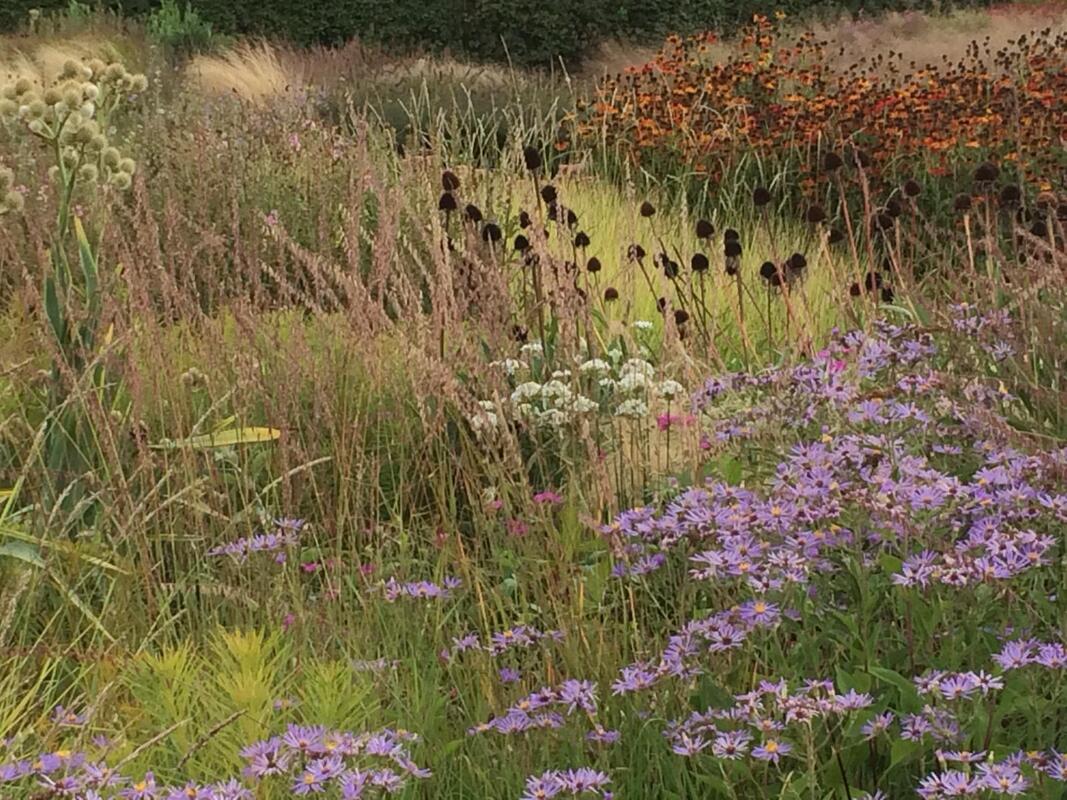
I loved the way it mixed through this white aster…īut equally it looked fabulous on its own.

One of the stars of the garden was the persicaria which was in full flower and still quite vibrant. But the contrast between it and the light flower heads of the grass looked gorgeous.

This Verbena bonariensis was on it’s own and we suspect that it had made it’s way into the garden by itself. Look how fabulous the salvia spikes look amongst the frothy flower heads of the grasses. What I love about Autumn perennial planting is the mix between faded flower heads and those that are still flowering strongly. Have you noticed how many spiders there seem to be around this year? The early morning dew made them glisten in amongst the plants… The sunlight was diffused by the misty air which made for some good shots. By 1966, the one-room country school had become a thing of the past.Part two of my visit to Hauser & Wirth in Somerset on Tuesday features some close-up photographs I took of the planting. School districts consolidated, pooling their resources to provide more teachers, broader curriculum, and opportunity for extracurricular activities. Equipped with little more than a blackboard and a few textbooks, teachers passed on to their pupils cultural values along with a sound knowledge of the three Rs.īy the turn of the century, the population began to shift to the cities and country schools began to lose students and tax support.

She had to be a nurse, janitor, musician, philosopher, peacemaker, wrangler, fire stoker, baseball player, professor, and poet for less than $50 a month. The school teacher, sometimes slightly older than her pupils, was a renaissance individual. When they arrived on their first day of school they may have only known how to speak a foreign language but they soon learned how to speak, read, spell, and write English. They got to school on foot, on horseback, or in a wagon. The children who attended ranged in age from five to 21 and endured dust storms, prairie fires, and cattle drives swirling past the school house in order to get an eighth grade education. They were called names like Prairie Flower, Buzzard Roost, and Good Intent. For a hundred years, white frame or native stone one-room schoolhouses dotted the section corners across Kansas.


 0 kommentar(er)
0 kommentar(er)
